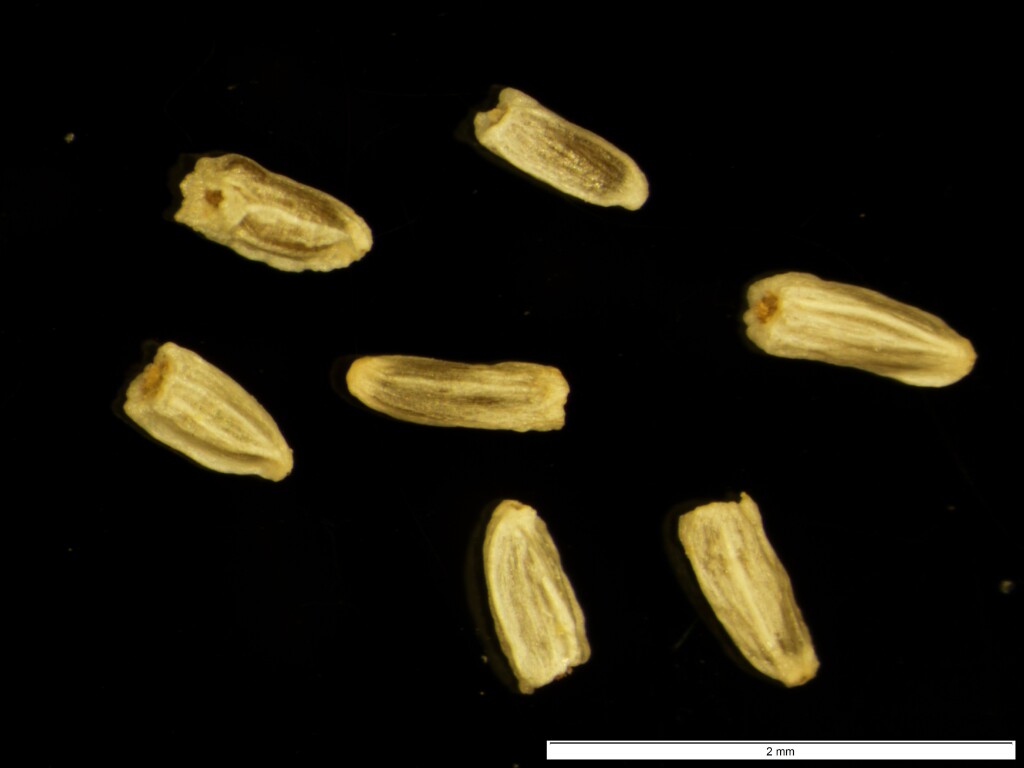Cassinia ozothamnoides
(F.Muell.) Orchard Cottony HaeckeriaErect shrub to 2 m high; branchlets with dense white woolly hairs with occasional weak emergent spreading transiently gland-tipped hairs, ribbed by decurrent midribs and margins. Leaves erect to spreading, sessile, linear, (10–)20–30(–55) mm long, 1(–2) mm wide, upper surface dark green, obscured by white woolly hairs when young, lower surface densely white woolly, apex acute with a reflexed mucro, margin revolute. Inflorescences corymbose or hemispherical, (3–)5–9 cm diam. Capitula 50–200, straw-coloured, cylindric, (3–)4–5 mm long, c. 1–2 mm wide; involucral bracts 12–18, innermost linear-oblong with lamina narrow-triangular, c. 1.5–2 mm long, erect, flat, hyaline, margin entire to erose; receptacle bracts usually 2; florets 5–6. Cypsela cylindric, (0.8–)1.0–1.2 mm long, sparsely papillose; pappus absent or 1–16 bristles, 1.5–1.8 mm long. Flowers Oct.–Mar.
VRiv, Gold, CVU, NIS, HNF. An uncommon pioneer species of disturbed sites in dry open-forests on poor shaly or stony soils of the north-east. Distribution previously extended to south-central Victoria around Daylesford. Occurs from 170–400 m altitude.
Cassinia ozothamnoides was previously included in Haeckeria. However, the presence of pappus bristles on some florets and bumps indicating the position of aborted pappus bristles on others supports removal of this species from Haeckeria. Its inclusion in Cassinia is warranted based on the presence of receptacle bracts between the florets (Orchard 2004a). It was also found to be nested within Cassinia in molecular phylogenetic analyses (Schmidt-Lebuhn & Constable 2013), supporting its inclusion in Cassinia.
The Victorian species C. scabrida and C. venusta were once included within a broader C. ozothamnoides (as Haeckeria ozothamnoides) but are distinguished from C. ozothamnoides based primarily on leaf and stem indumentum. These indumentum characters show little or no overlap between species (Orchard 2004a).
Puttock, C.F. (1999). Haeckeria. In: Walsh, N.G.; Entwisle, T.J., Flora of Victoria Vol. 4, Cornaceae to Asteraceae, pp. 745–746. Inkata Press, Melbourne.
 Spinning
SpinningOrchard, A.E. (2004). A reassessment of the genus Haeckeria (Asteraceae: Gnaphalieae), with definition of new species of Cassinia. Australian Systematic Botany 17: 447–467.
Schmidt-Lebuhn, A.N.; Constable, L. (2013). Phylogenetic relationships of the Australasian shrubby everlastings Ozothamnus and Cassinia (Asteraceae: Asteroideae: Gnaphalieae). Cladistics 29: 574–588.
